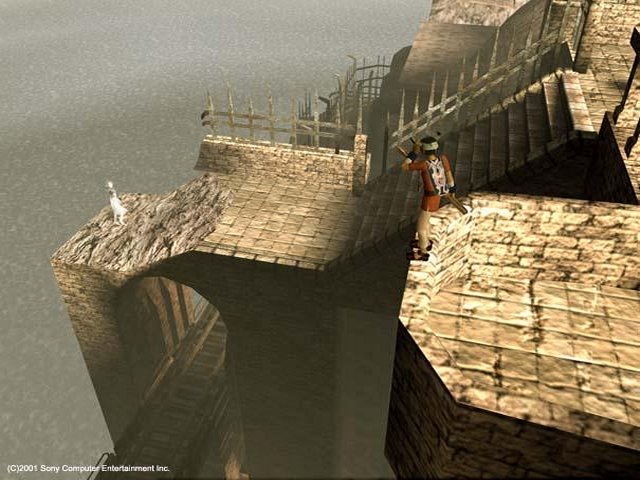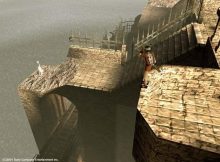A look back at the game that made Fumito Ueda a household name amongst video game auteurs
Team ICO’s The Last Guardian was recently released to somewhat mixed reviews. It was a dissapointment to some, as the game had considerable expectations to live up to as the follow up to the team’s previous release, the prestigious Shadow of the Colossus (2005). Therefore now is a good time for a retrospective.
Like many notable games from 2001, ICO is a bit of a showcase of the PS2’s power. But compared to those other titles, ICO stands in stark contrast with its minimalist approach: there’s no HUD, there’s hardly any music or dialogue and the designers intentionally trimmed down features that could interfere with players’ immersion.
The premise is simple. You control a small boy, armed only with a plank of wood and his wits. Your goal is to escape from a mysterious castle with a princess (Yorda). Said damsel in distress plays a central role in the design, as it’s your job to protect her from pursuing shadow entities. Whenever she’s kidnapped, the game ends if you fail to rescue her in time. In other words, the entire game is one huge escort quest. Yorda is utterly useless and incapable of doing anything on her volition, so you must hold her hand, hoist her to high places and so on. Although it’s annoying to have to wait for her constantly, this mechanic reinforces a connection between the player and her on a mechanical level. Every time you start sprinting, you can feel her weight dragging you down as you hold on to her. It’s a clever, if not exemplary, showcase of subtle game design, but it only succeeded in antagonizing her to me.

When you aren’t defending Yorda from shadowy creatures, you spend most of the game time solving puzzles and platforming in equal measure. The obstacles mostly consist of rudimentary block pushing and switch pulling type of puzzles, but they fit in well with the ascetic motif. The game doesn’t resort to hints either, it’s up to the player to solve everything. As the visuals aren’t cluttered, the environmental design does a commendable job of guiding players towards the right solution without ever outright telling what to do.
The level design in general is great. As the entire game takes place in a castle and its close vicinity, your journey isn’t a linear trek from A to B. Over the course of the adventure, you’ll realize that you’ve returned to a prior area from a different angle. The interlocking level design impressed me on a few occasions. Some of the expansive outdoor environments are also visually appealing.
The game certainly deserves its place in the pantheon of puzzle platformers, but I wasn’t as ecstatic about it as its devotees. The occasional camera problems were obnoxious, and modern auto saves have made me accustomed to not having to redo 5 minutes worth of gameplay every time I die. I personally prefer Shadow of the Colossus, but ICO’s status is understandable when put in proper historical context.
Developer: SCE Japan Studio
Publisher: Sony
Platforms: PS2
Release date: 24.9.2001 (US)
PEGI: 3+
